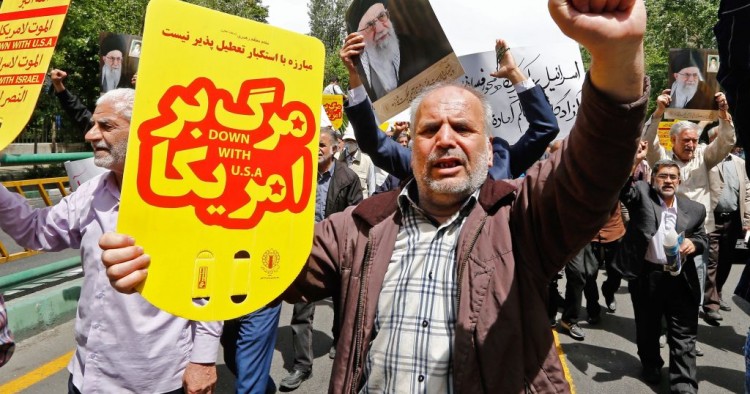This article was first published by The National Interest.
The United States and Iran have an arsenal of well-rehearsed grievances against each other. Underneath these complaints about one another’s behaviors, however, are stories rooted in a distant past that continue to stir emotions on both sides. It is the power of these stories, as much as the more proximate grudges and differences over policy, that could lead Iran and the United States closer to war.
Each side believes it is legitimately responding to current provocations by the other. The Trump administration points to what it sees as Iran’s regional adventurism and its missile program. This has allowed Washington to justify its withdrawal from the nuclear deal, which President Donald Trump claimed was too lenient and too short in duration, and to renew punishing economic sanctions against Iran. In addition, the Trump administration has also launched a fusillade of provocative actions against the Islamic Republic, including attaching the terrorist moniker to the Islamic Revolutionary Guards Corp (IRGC); ending waivers for countries like China, Japan, and South Korea to import Iranian oil; and sending the USS Abraham Lincoln warship to the Persian Gulf.
Unsurprisingly, Iran harbors a different view of who is the aggressor in the current conflict. Tehran expresses outrage at what it considers U.S. duplicity in walking away from a nuclear deal negotiated in good faith between Iran, the United States, Russia, China, France, the United Kingdom, and Germany. Not to be outdone in the war of words, Tehran labeled United States Central Command (CENTCOM) as a terrorist organization and has now threatened to breach several tenets of the 2015 nuclear deal should the Europeans be unable to ease the pain of an American-led sanctions regime. And while attribution pointing to Iran hasn’t been definitive, there have been several worrisome attacks on oil tankers in the Persian Gulf and on targets near the U.S. embassy compound in Baghdad.
But while this dangerous path of escalation is very much a product of these mutually reinforcing provocations, animating U.S.-Iran relations more powerfully are the stories that are deeply rooted in threat perceptions from the past. It is these historical narratives which provide the subtext to the current conflict between the two countries and the key to eventual rapprochement between the United States and Iran.
The Middle East Institute (MEI) is an independent, non-partisan, non-for-profit, educational organization. It does not engage in advocacy and its scholars’ opinions are their own. MEI welcomes financial donations, but retains sole editorial control over its work and its publications reflect only the authors’ views. For a listing of MEI donors, please click here.













